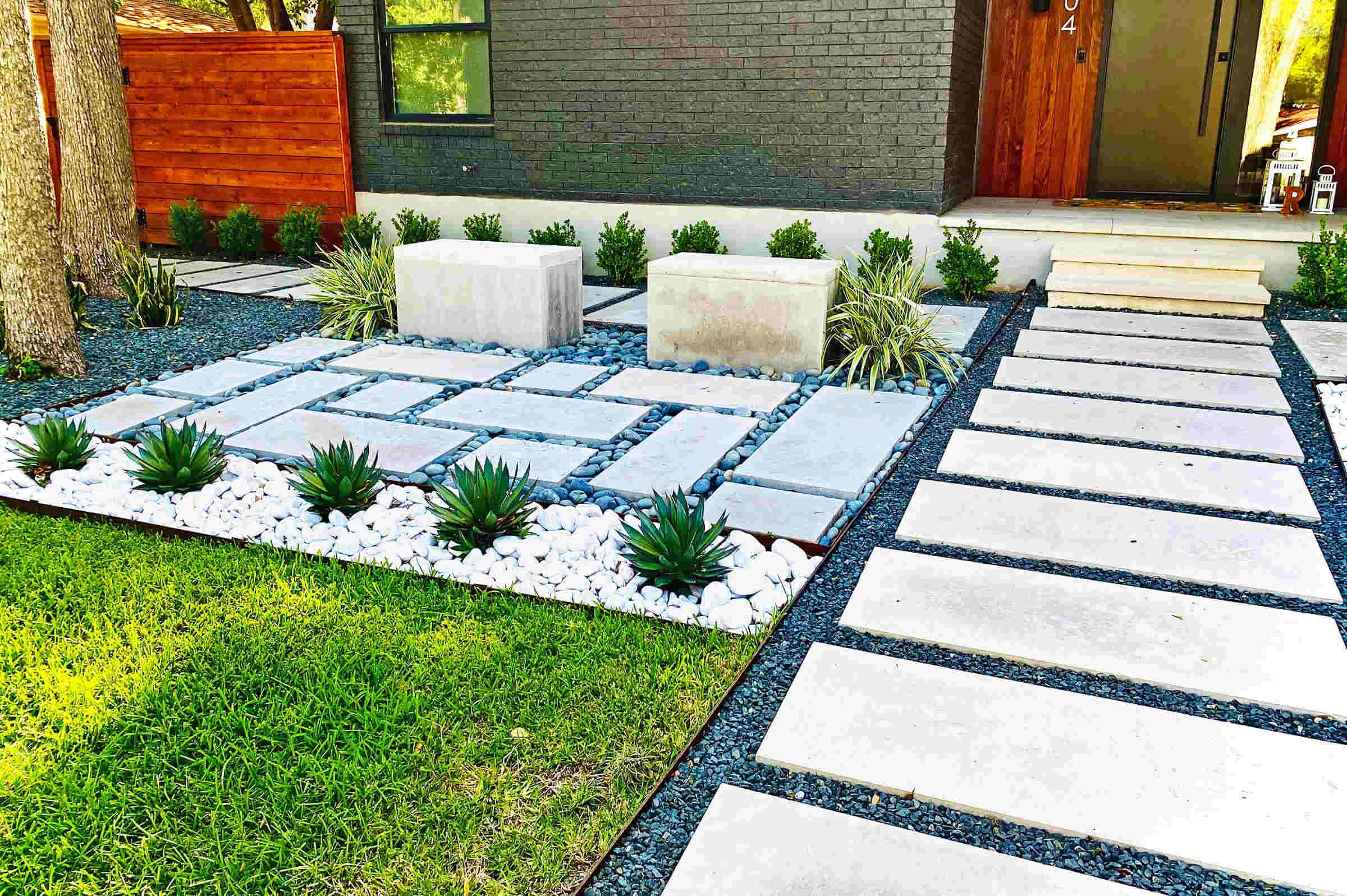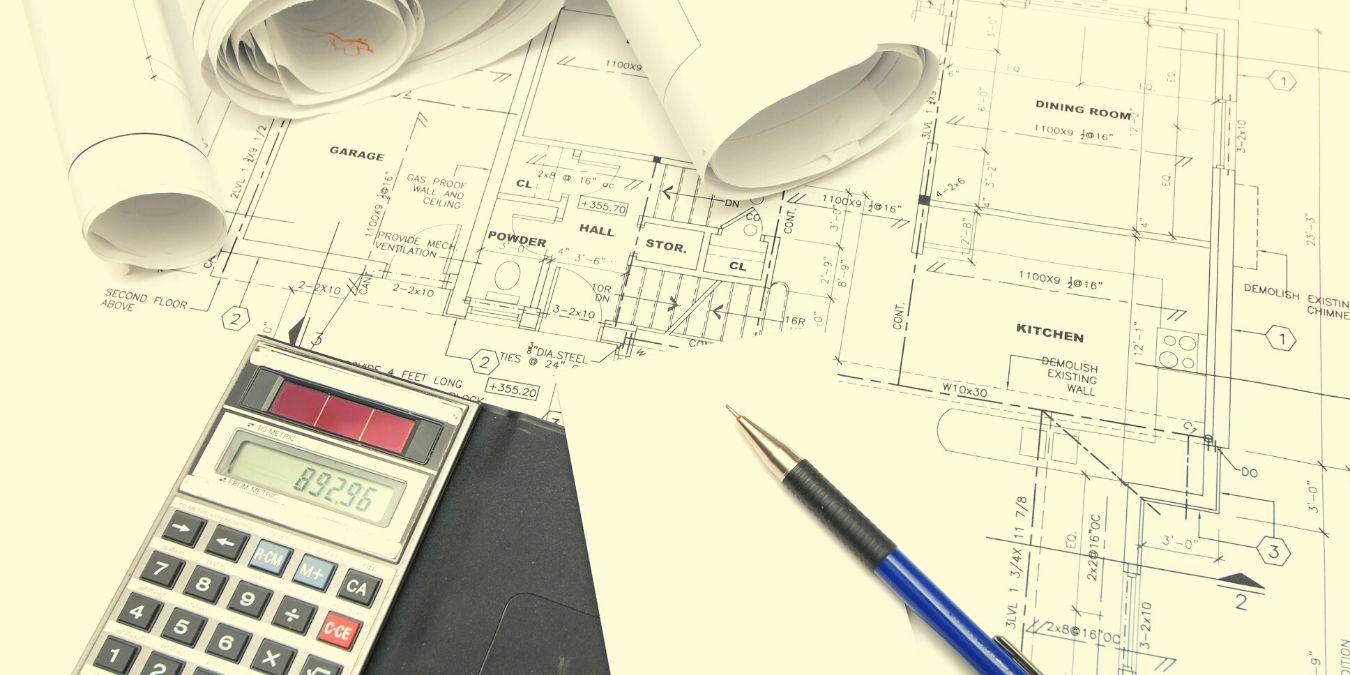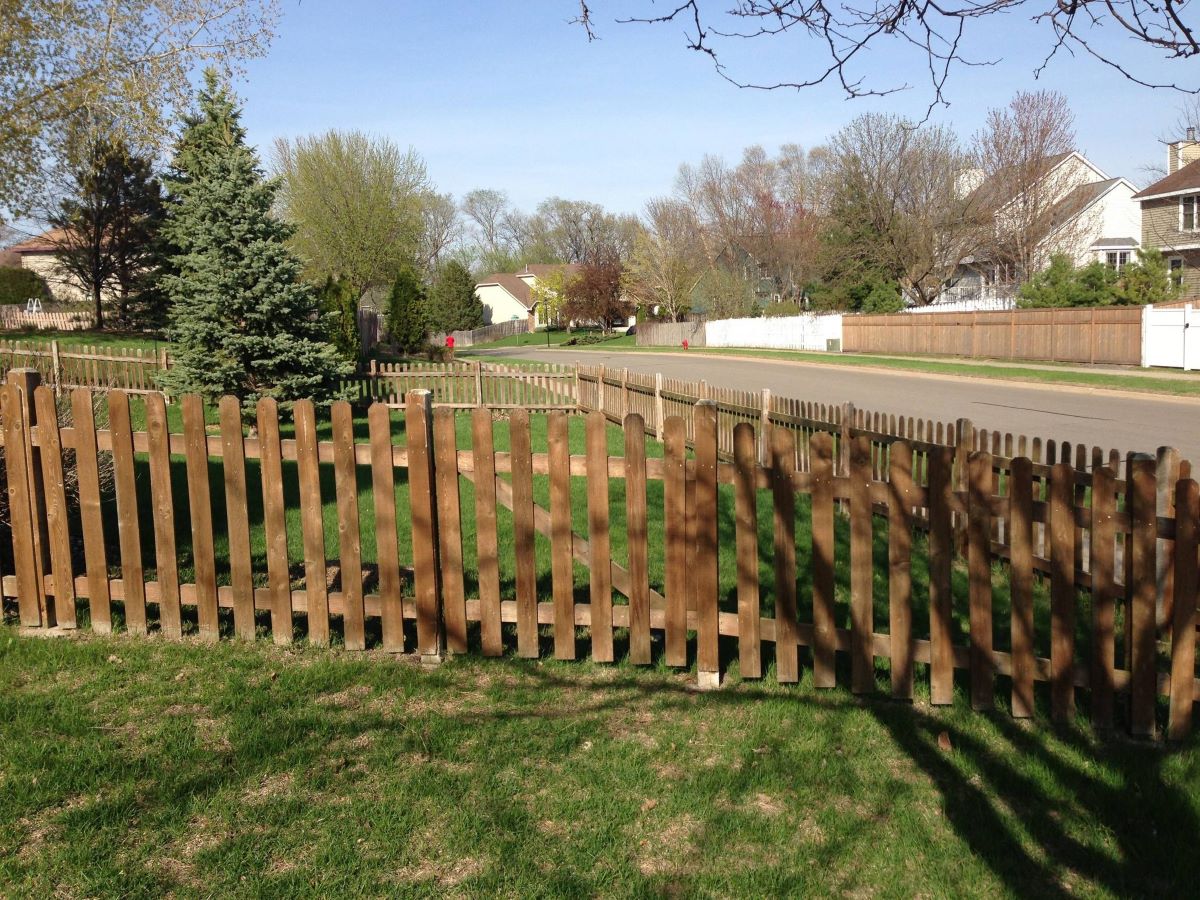Home>Garden Essentials>How To Write A Landscaping Estimate


Garden Essentials
How To Write A Landscaping Estimate
Modified: March 7, 2024
Learn how to write a precise garden landscaping estimate, including cost breakdowns and expert tips. Enhance your estimating skills and win more projects.
(Many of the links in this article redirect to a specific reviewed product. Your purchase of these products through affiliate links helps to generate commission for Storables.com, at no extra cost. Learn more)
Introduction
Welcome to the world of landscaping! Whether you are a professional landscaper or an enthusiastic homeowner looking to transform your outdoor space, understanding how to write an accurate and comprehensive landscaping estimate is essential. A well-crafted estimate not only helps you determine the cost of the project but also ensures that the client has a clear understanding of the services to be provided and the associated expenses.
In this article, we will guide you through the process of writing a landscaping estimate from start to finish. We will cover everything from understanding the project requirements to presenting the estimate in a professional manner. So, let’s dive in and discover the key steps to creating an accurate and enticing landscaping estimate!
Key Takeaways:
- Crafting a landscaping estimate involves understanding the project, gathering client info, calculating costs, and adding a profit margin. Presenting the estimate professionally is key to building trust and securing the project.
- A well-crafted landscaping estimate reflects the unique needs of each client, includes materials, labor, equipment, overhead expenses, and a profit margin. Clear presentation and transparency build trust and confidence with the client.
Read more: How To Price A Landscaping Estimate
Understanding the Project Requirements
Before you can begin crafting a landscaping estimate, it’s crucial to fully understand the project requirements. This involves meeting with the client and discussing their vision for the space. Take the time to listen attentively and ask relevant questions to ensure you have a clear understanding of their expectations.
During this initial meeting, gather information about the size of the area to be landscaped, the desired features such as a patio, walkways, or gardens, and any specific materials or plants the client may have in mind. Be sure to also inquire about any existing elements that will need to be removed or incorporated into the new design.
Additionally, consider factors such as the terrain, soil conditions, and local climate. These factors can significantly impact the scope and cost of the project. For example, if the site has poor soil quality, it may require additional preparation and amendment before new plantings can be installed.
By thoroughly understanding the project requirements, you can accurately assess the amount of work and materials needed, allowing you to create a more precise estimate.
It is important to note that every landscaping project is unique, and the project requirements can vary significantly. One size does not fit all when it comes to creating estimates. Tailor the estimate to the specific needs and desires of each client to ensure accuracy and customer satisfaction.
Gathering Information from the Client
Once you have a clear understanding of the project requirements, the next step in writing a landscaping estimate is to gather detailed information from the client. This information will help you accurately calculate the costs associated with the project.
Start by collecting the client’s contact information, including their name, address, phone number, and email address. This information will be essential for communicating the estimate and any updates or changes throughout the project.
Next, ask the client about their budget for the project. Understanding their financial constraints will help guide you in creating an estimate that aligns with their expectations. It’s important to have an open and honest conversation about budget early on to avoid any misunderstandings or conflicts down the road.
During the discussion, ask the client about any specific materials or plants they would like to incorporate into the design. This will help you determine the cost of these items and factor them into the estimate. Additionally, inquire about any particular design preferences or architectural styles they prefer, as this will influence the overall design and materials used.
While gathering information, also make note of any specific timelines or deadlines the client has in mind. Understanding their scheduling requirements will allow you to plan the project accordingly and ensure that the estimate includes any additional costs associated with expedited timelines.
Lastly, ask the client if there are any other special considerations or details that need to be taken into account. This could include factors such as accessibility issues, specific permits or approvals required, or any unique challenges related to the property.
By gathering detailed information from the client, you can create an estimate that accurately reflects their needs and preferences while providing transparency and clear expectations for the project.
Calculating the Materials and Labor Costs
One of the key components of writing a landscaping estimate is accurately calculating the materials and labor costs involved in the project. This step is crucial in determining how much to charge the client and ensuring that your estimate is both competitive and profitable.
When it comes to materials, start by creating a detailed list of all the items needed for the project. This can include plants, trees, shrubs, mulch, soil, rocks, gravel, pavers, and any other materials specific to the design. Research local suppliers and obtain quotes to determine the current market prices for these materials.
Keep in mind that the quantity of materials required will depend on the size of the project and the design specifications. Calculate the amount of each item needed based on the area to be landscaped and the desired coverage. It’s always a good idea to add a buffer or contingency to account for any unforeseen variations or errors.
Once you have the material costs, it’s time to calculate the labor costs. Start by estimating the number of hours it will take to complete the project. Consider the complexity of the design, the site conditions, and the size of your crew if you have one. Research industry standards or consult with experienced landscapers to determine the appropriate hourly rate for your region.
Keep in mind that labor costs can also include any additional specialized tradespeople or subcontractors that may be required for certain aspects of the project, such as irrigation installation, electrical work, or hardscaping.
In addition to the hourly labor costs, make sure to factor in any additional expenses such as equipment rentals, fuel costs, and insurance premiums. These overhead expenses are essential to consider in order to run a profitable landscaping business.
By accurately calculating both the materials and labor costs, you can ensure that your estimate reflects the true cost to complete the project while also providing a fair and competitive price for your services.
Estimating Equipment and Tools Needed
When preparing a landscaping estimate, it is crucial to factor in the equipment and tools that will be required to complete the project efficiently and to a high standard. Estimating the necessary equipment will help you determine the costs associated with renting or purchasing the required tools.
Start by analyzing the project requirements and the tasks involved. Identify the specific equipment and tools needed to complete each task effectively. This may include items such as lawn mowers, trimmers, edgers, shovels, rakes, wheelbarrows, and more.
To estimate the equipment costs, consider the duration of the project and the hours of equipment usage required. Research the rental rates for the necessary equipment from local suppliers or calculate the depreciation cost if you plan to purchase the items. Make sure to also account for any maintenance or repair costs associated with the equipment.
In addition to the equipment costs, factor in the cost of small tools and supplies that will be needed, such as safety gear, gloves, goggles, and irrigation supplies. These items may appear insignificant, but they are essential for completing the project efficiently and safely.
Consider the availability and accessibility of the required equipment and tools in your area. If certain items are scarce or challenging to rent or purchase, consider alternative options or adjust the estimate accordingly.
By estimating the equipment and tools needed accurately, you can ensure that your estimate incorporates all the necessary expenses, allowing for smooth execution of the project while maintaining profitability.
When writing a landscaping estimate, be sure to include detailed descriptions of the work to be done, accurate measurements, and a breakdown of materials and labor costs.
Read more: How To Write A Bid For Landscaping
Incorporating Overhead Expenses
When writing a landscaping estimate, it’s important to account for overhead expenses that are essential for running a successful business. These expenses go beyond the direct costs of materials and labor and include various operational costs that are necessary to keep your landscaping business running smoothly.
Start by identifying the specific overhead expenses that are relevant to your business. This can include rent or mortgage payments for your office or storage space, utilities such as electricity and water, insurance premiums for general liability and workers’ compensation, vehicle expenses, marketing and advertising costs, office supplies, and any licensing or professional association fees.
Add up these expenses over a period of time, such as a month or a year, and calculate the average monthly or annual cost. This will give you an idea of how much you need to allocate for overhead expenses in your landscaping estimate.
Once you have determined the total overhead cost, it’s important to distribute it across your projects to ensure that each estimate includes a fair share of these expenses. One common method is to calculate an overhead rate as a percentage of your total direct costs (materials and labor). This overhead rate can vary depending on the size of your business and the specific expenses involved.
For example, if your total overhead expense is $1,000 per month and your total direct costs for a project are $5,000, you can allocate 20% ($1,000 / $5,000) of the overhead expense to that project. This ensures that each project contributes its share of the overhead costs.
By incorporating overhead expenses into your landscaping estimate, you create a more comprehensive and accurate representation of the true costs involved in running your business. This approach allows you to maintain profitability while covering the essential operational expenses.
Adding Profit Margin
When creating a landscaping estimate, it’s important to include a profit margin that not only covers your expenses but also allows for growth and sustainability in your business. Adding a profit margin ensures that you are compensated for your expertise, time, and effort, while also providing a cushion for unforeseen expenses or fluctuations in the market.
To determine your desired profit margin, consider several factors, including the level of competition in your area, the quality of your work, and the value you bring to your clients. Research the industry standards for profit margins to get a benchmark, but remember that each business is unique, and your profit margin should align with your specific circumstances and goals.
Once you have determined your desired profit margin, calculate it as a percentage of your total costs, including labor, materials, equipment, and overhead expenses. This percentage can vary, but a common range is between 10% to 20%.
For example, if your total costs for a project, including materials, labor, and overhead expenses, amount to $5,000, and you aim for a 15% profit margin, you would add $750 ($5,000 x 0.15) to your estimate as the profit margin.
It’s important to note that a profit margin is not just about making money in the short term. It also allows you to invest in your business, pay your employees fairly, and continually improve your skills and services. Without a healthy profit margin, it can be challenging to sustain and grow your landscaping business in the long term.
Adding a profit margin to your landscaping estimate ensures that you are compensated for your hard work, expertise, and the risks associated with running a business. It positions your business for long-term success and sustainability.
Presenting the Landscaping Estimate
After carefully calculating all the costs involved and adding a profit margin to your estimate, it’s time to present it to the client in a clear and professional manner. A well-presented landscaping estimate not only instills confidence in the client but also demonstrates your professionalism and attention to detail.
When presenting the estimate, provide a clear and concise breakdown of the costs. Start with an itemized list of the materials, including the quantity, unit cost, and total cost for each item. This allows the client to see exactly what they are paying for.
Next, outline the labor costs, including the number of hours, the hourly rate, and the total labor cost for each task or phase of the project. It’s important to be transparent and provide a detailed explanation of the labor involved to justify the costs to the client.
Incorporate the equipment and tool costs into the estimate, clearly stating any rental fees or depreciation costs associated with them. This shows that you have taken into account all the necessary resources to complete the project successfully.
Include a separate section for overhead expenses, clearly explaining the various operational costs that are essential for running your landscaping business. This helps the client understand that these expenses are necessary and contribute to the overall cost of the project.
Finally, clearly state the profit margin you have added to the estimate. This can be presented as a separate line item or as a percentage added to the total cost. Providing this information shows transparency and allows the client to understand your pricing structure.
Along with the breakdown of costs, include a summary section that provides the total cost of the project, any terms and conditions, the estimated start and completion dates, and any other relevant details. This provides a comprehensive overview and ensures that both parties are on the same page regarding the scope and expectations of the project.
Remember, presentation is key. Use professional software or create a well-designed document that is easy to read and visually appealing. Consider using branding elements, such as your company logo and colors, to create a cohesive and polished look.
When presenting the estimate, take the time to go through it with the client, explaining each section and answering any questions they may have. This personal touch demonstrates your commitment to customer service and builds trust with the client.
By presenting the landscaping estimate in a clear, professional, and transparent manner, you increase the likelihood of securing the project and establishing a positive working relationship with the client.
Conclusion
Writing a comprehensive and accurate landscaping estimate is a vital skill for any landscaper or gardening enthusiast. It allows you to determine the cost of the project, communicate the scope of work to the client, and ensure that your services are priced competitively while maintaining profitability.
Throughout this article, we’ve discussed the key steps involved in creating a landscaping estimate. From understanding the project requirements and gathering information from the client to calculating the materials, labor, equipment costs, and incorporating overhead expenses, each step plays a crucial role in creating an accurate and enticing estimate.
Additionally, it’s essential to add a profit margin to your estimate, as it not only compensates you for your expertise and time but also ensures the sustainability and growth of your landscaping business.
Finally, don’t forget the importance of presenting the estimate in a clear and professional manner. Providing a detailed breakdown of costs, explaining the various components, and addressing any questions or concerns from the client helps build trust and confidence in your services.
Remember that every landscaping project is unique, and careful consideration must be given to each client’s specific needs and preferences. By combining your gardening expertise with a well-crafted estimate, you can provide clients with a clear understanding of the project, pricing, and the value your services bring to their outdoor space.
So, whether you are a professional landscaper or a homeowner looking to transform your garden, use the knowledge and guidelines shared in this article to confidently create accurate and engaging landscaping estimates.
Happy landscaping!
Frequently Asked Questions about How To Write A Landscaping Estimate
Was this page helpful?
At Storables.com, we guarantee accurate and reliable information. Our content, validated by Expert Board Contributors, is crafted following stringent Editorial Policies. We're committed to providing you with well-researched, expert-backed insights for all your informational needs.















0 thoughts on “How To Write A Landscaping Estimate”